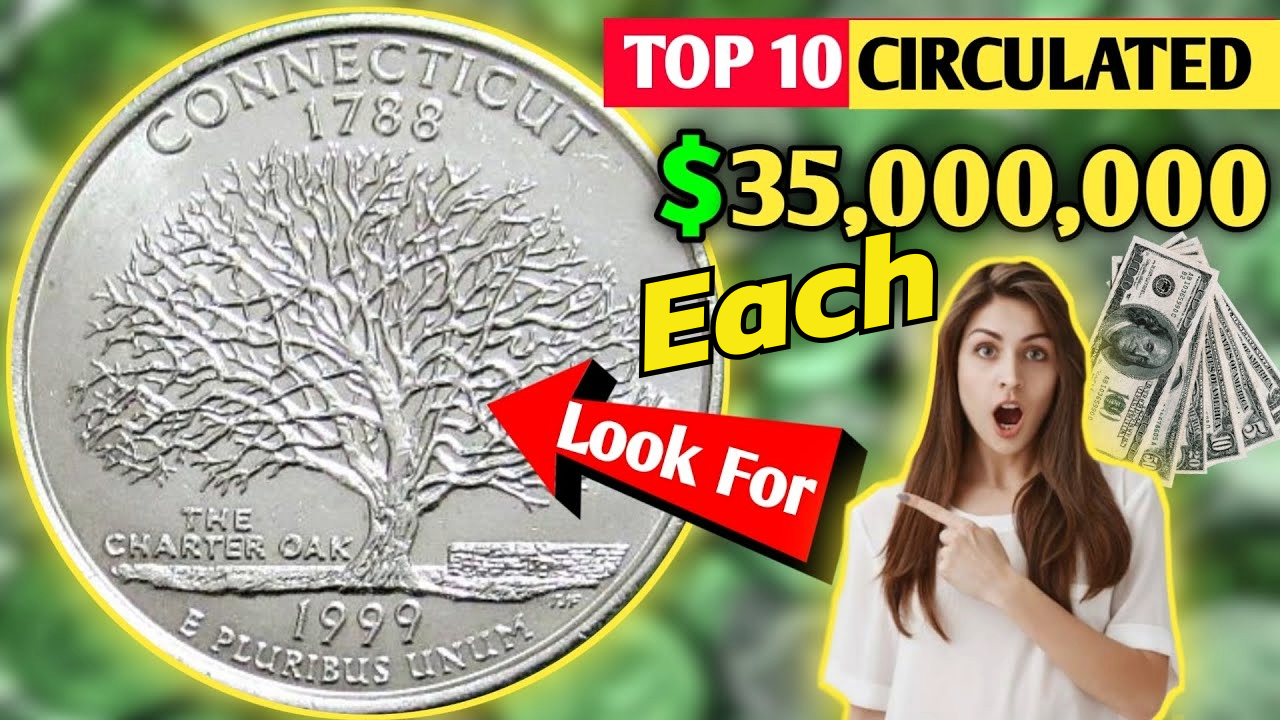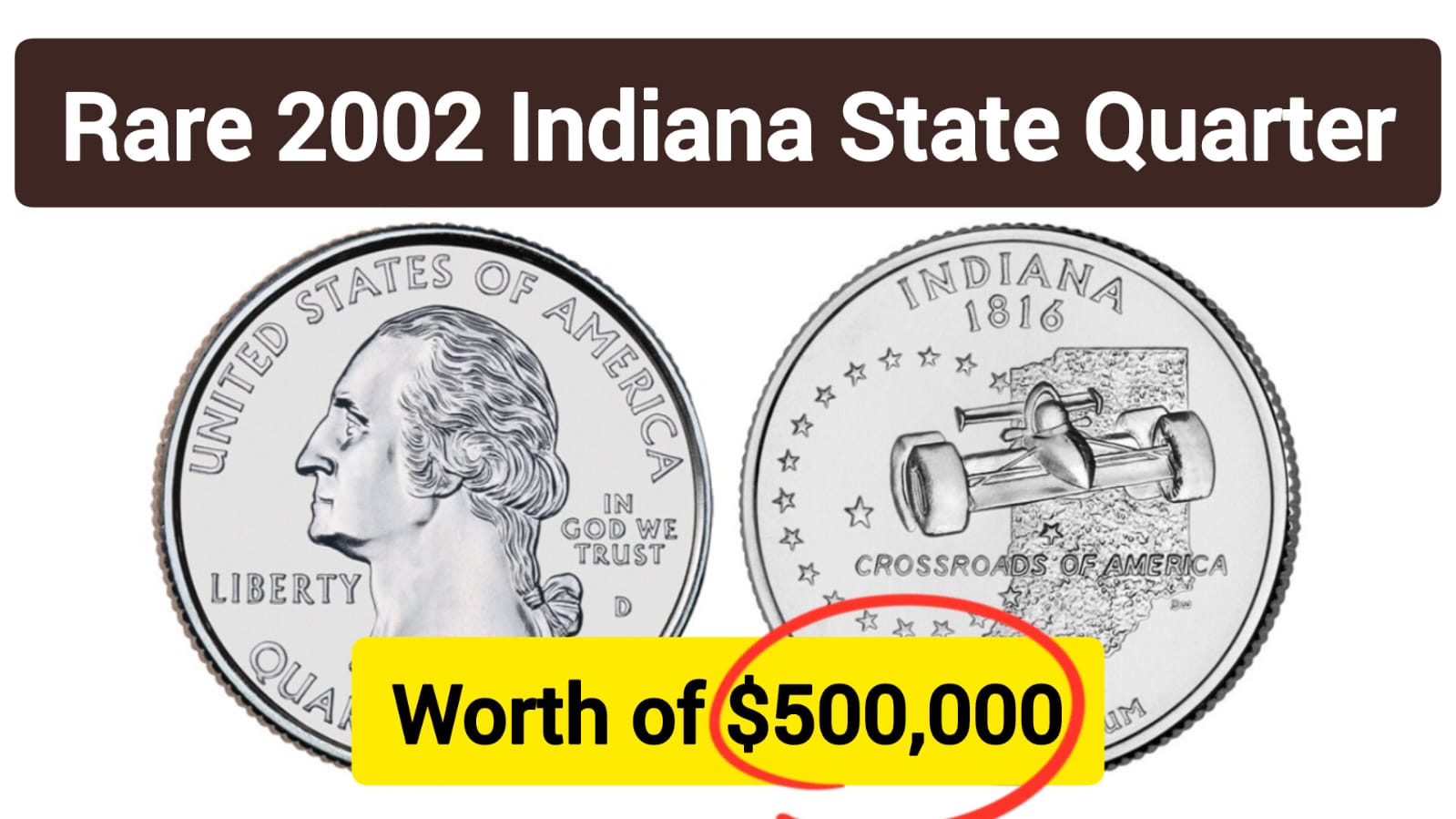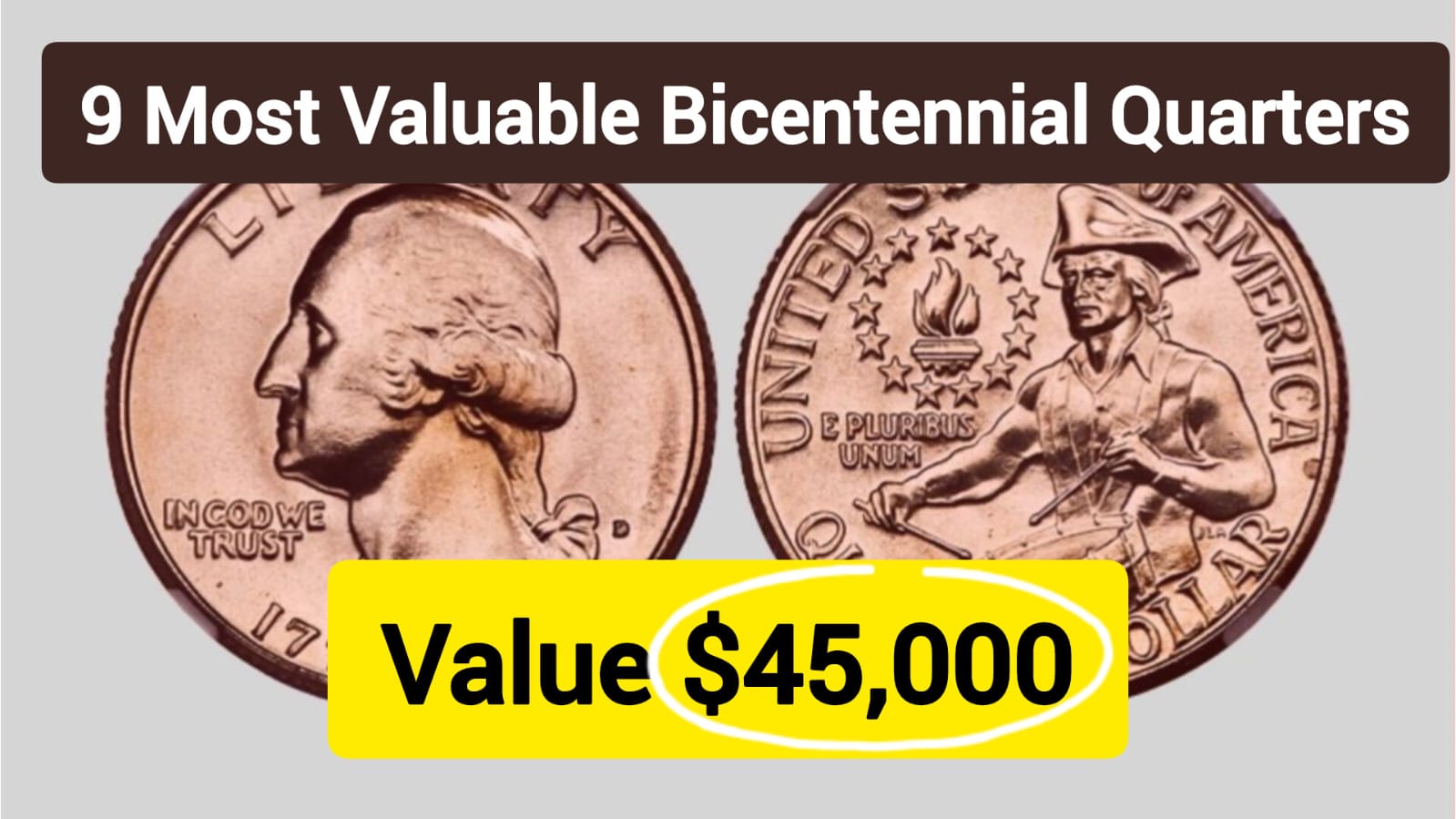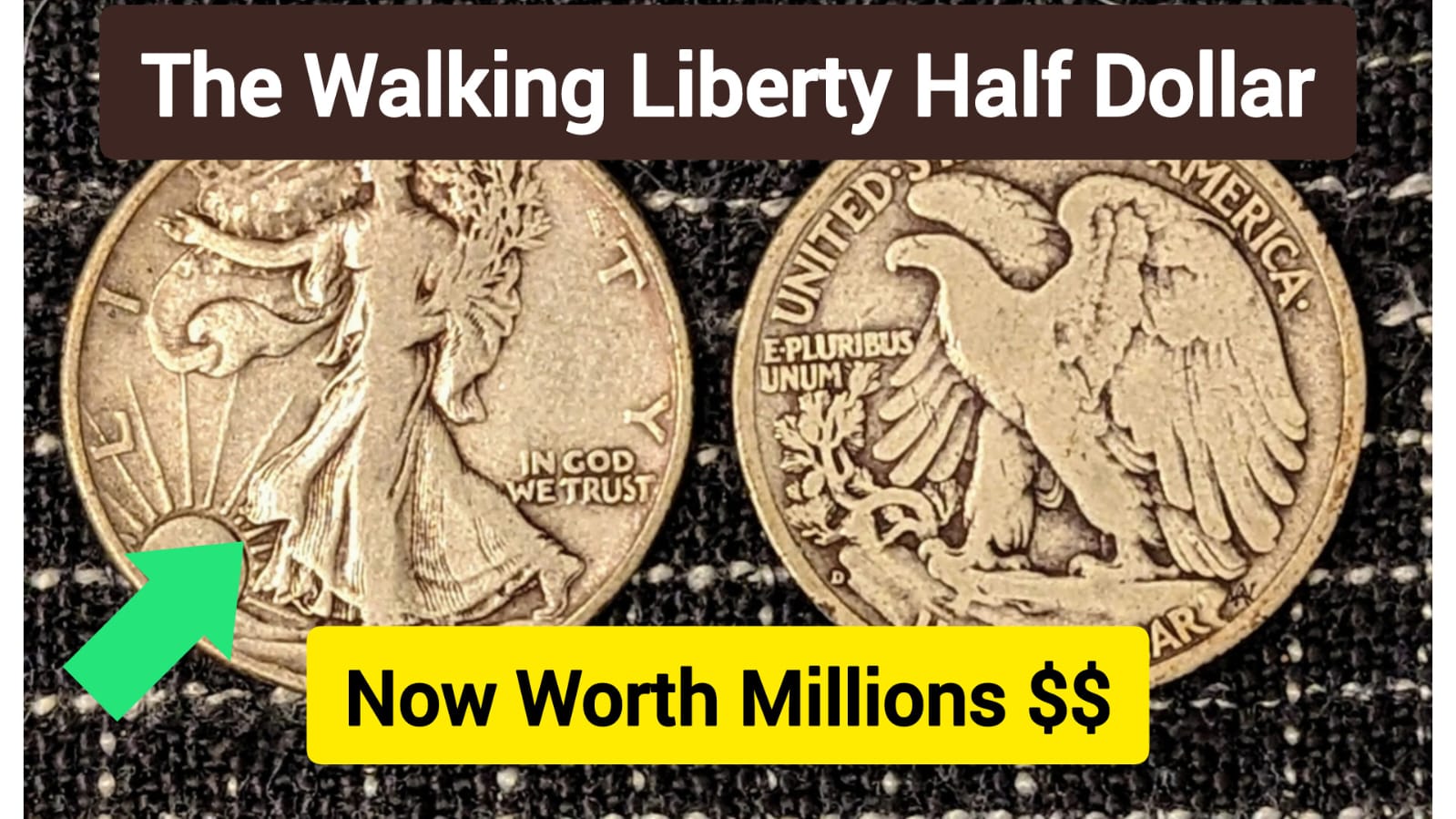Have you ever glanced at the quarters jingling in your pocket and wondered if any of them might be worth more than 25 cents? While most state quarters are only worth their face value, a handful of rare specimens have become the holy grail for coin collectors, with some reportedly valued in the millions.
Though recent viral claims about quarters worth $35 million each are greatly exaggerated, the truth about valuable state quarters is still fascinating and potentially lucrative for lucky finders.
The State Quarters Program, which ran from 1999 to 2008, produced 50 unique designs celebrating each state’s heritage. During this massive production run, various minting errors and rare variations occurred, transforming ordinary quarters into treasured collectibles.
What’s most exciting is that some of these valuable quarters could still be circulating today, perhaps hiding in your spare change jar or passing through your hands in everyday transactions.
In this article, I’ll separate fact from fiction about these valuable state quarters, explore what makes certain coins genuinely valuable, and help you identify if you might be holding a small fortune in your hand. Let’s dive into the fascinating world of numismatics and discover which state quarters are truly worth hunting for.
The Truth About Valuable State Quarter Values
Before we explore the most valuable state quarters, let’s address the elephant in the room: No state quarter has ever sold for $35 million. Recent viral claims about quarters worth tens or hundreds of millions are simply myths perpetuated by clickbait articles and social media. The most valuable state quarter ever sold fetched approximately $6,000 to $10,000 – still an impressive return on a 25-cent investment!
The State Quarters Program was one of the most successful coin initiatives in U.S. history, with the Mint producing over 34 billion quarters featuring unique designs for each state. What makes certain state quarters valuable isn’t just their design but their rarity, minting errors, and condition. Let’s explore the genuinely valuable specimens that collectors dream of finding.
What Makes State Quarters Valuable?
The extraordinary value of certain state quarters comes down to four key factors: rarity, historical significance, minting errors, and condition. Let’s break these down:
Rarity: When Less Means More
The rarer a coin is, the more valuable it becomes. Some state quarters became rare due to limited mintage, while others gained value through unusual circumstances. For example, some 1999 Delaware quarters were accidentally struck on experimental golden-colored planchets intended for the Sacagawea dollar, creating extremely rare specimens.
Minting Errors: Mistakes Worth Thousands
Some of the most valuable state quarters owe their worth to mistakes made during the minting process. The 2004 Wisconsin “Extra Leaf” quarter shows what appears to be an additional leaf on the corn stalk due to a die error. The 2005 Minnesota quarter sometimes shows an “Extra Tree” due to die doubling. These errors transformed ordinary quarters into collector’s items worth hundreds or even thousands of dollars.
Condition: Mint State Magic
A coin’s condition dramatically affects its value. Numismatists grade coins on a scale from Poor (P-1) to Perfect Mint State (MS-70). A common state quarter in circulated condition might be worth only face value, but the same coin in pristine, uncirculated condition could fetch a premium. For example, a 2000 South Carolina quarter graded MS69 (nearly perfect) has sold for over $8,000.
The 10 Most Valuable State Quarters to Look For
While the $35 million valuation is a myth, here are the 10 genuinely most valuable state quarters that could still be in circulation, along with their realistic values:
| Rank | Quarter | Year | Mint Mark | Error/Feature | Realistic Value |
|---|---|---|---|---|---|
| 1 | Delaware | 1999 | P | Experimental Golden Planchet | $5,000 – $10,000 |
| 2 | Wisconsin | 2004 | D | Extra Leaf (High/Low) | $300 – $6,000 |
| 3 | Minnesota | 2005 | P | Extra Tree Error | $200 – $3,500 |
| 4 | Georgia | 1999 | P | Experimental Golden Planchet | $5,000 – $7,000 |
| 5 | South Carolina | 2000 | P | High Grade MS69 | $8,000 |
| 6 | Delaware | 1999 | P | “Spitting Horse” Error | $400 – $5,000 |
| 7 | Kansas | 2005 | P | “In God We Rust” Error | $50 – $100 |
| 8 | Alaska | 2008 | D | “Extra Claw” Error | $300 – $2,500 |
| 9 | District of Columbia | 2009 | D | Doubled-Die Error | $150 – $4,000 |
| 10 | New Hampshire | 2000 | P | Scarcity in Pristine Form | $100 – $1,500 |
How to Identify These Rare Quarters
Finding one of these valuable quarters requires knowing exactly what to look for. Here’s how to identify some of the most valuable specimens:
1999-P Delaware Golden Planchet Quarter
The 1999 Delaware quarter on an experimental golden planchet is one of the most valuable state quarters:
- Color: Has a distinctive golden tint instead of the usual silver color
- Origin: Struck on experimental planchets intended for the Sacagawea dollar
- Value: Up to $10,000 depending on condition
2004-D Wisconsin “Extra Leaf” Quarter
The Wisconsin quarter with the extra leaf error is among the most famous state quarter errors:
- Look For: An additional leaf on the corn stalk on the reverse side
- Varieties: Two types exist – “High Leaf” and “Low Leaf”
- Value: Between $300 and $6,000 depending on condition and variety
2005-P Minnesota “Extra Tree” Quarter
The Minnesota quarter with the extra tree error shows doubling in the design:
- Look For: An additional tree appearing in the state’s landscape design
- Cause: Die doubling during the minting process
- Value: Between $200 and $3,500 depending on condition
1999-P Delaware “Spitting Horse” Quarter
This error gives the appearance that the horse on the Delaware quarter is spitting:
- Look For: A die crack creating a line extending from the horse’s mouth
- Location: On the reverse side featuring Caesar Rodney on horseback
- Value: Between $400 and $5,000 depending on condition
How to Find Valuable State Quarters
Could you be sitting on a fortune without knowing it? Here are some practical ways to hunt for these valuable coins:
Check Your Change and Collections
Start by examining any state quarters you already have. Look through old coin jars, inherited collections, and even your everyday change. Pay special attention to the dates, mint marks, and any unusual features on the quarters you find.
Search Coin Rolls
Bank rolls of quarters can sometimes contain overlooked treasures. While the odds of finding extremely rare specimens are low, many collectors have found valuable coins this way.
Attend Estate Sales and Auctions
People often sell old coin collections without realizing their true value. Estate sales, garage sales, and auctions can be gold mines for finding valuable quarters at bargain prices.
Join Coin Collecting Communities
Connect with other collectors through clubs or online forums. These communities often share tips on where to find rare coins and can help authenticate potential discoveries.
Authentication: Separating Treasures from Fakes
If you believe you’ve found a valuable state quarter, proper authentication is crucial. Here’s how to verify your find:
- Detailed Examination: Use a magnifying glass to check for signs of alteration or authentic error features.
- Weight and Measurement: Compare your coin’s weight and dimensions to known specifications.
- Professional Grading: For potentially valuable coins, consider professional authentication services like PCGS (Professional Coin Grading Service) or NGC (Numismatic Guaranty Corporation).
Remember, the most valuable state quarters are also frequently counterfeited. Professional authentication is worth the investment if you believe you’ve found something special.
Conclusion
While the claim of state quarters worth $35 million each is certainly a myth, the reality is still fascinating and potentially lucrative. Genuine rare specimens like the 1999 Delaware Golden Planchet or 2004 Wisconsin Extra Leaf quarters have sold for thousands of dollars. The thrill of the hunt and the possibility of finding a small fortune in your pocket change makes searching for these rare quarters an exciting endeavor.
As you sort through your coins, remember that knowledge is your most valuable tool. Understanding what makes certain quarters valuable and how to identify them increases your chances of finding a genuine treasure. Even if you don’t discover a multi-thousand-dollar quarter, the journey through American history and numismatics is rewarding in itself. So check those coin jars, roll up your sleeves, and happy hunting!
FAQs About Valuable State Quarters
1. Is there really a state quarter worth $35 million? No, this is a myth. The most valuable state quarters have sold for approximately $6,000 to $10,000 at auction. While this is far from $35 million, it’s still an impressive return on a 25-cent coin.
2. How can I tell if my Wisconsin quarter has the valuable “Extra Leaf” error? Look closely at the corn stalk on the reverse side of the coin. The error appears as an additional leaf either high or low on the left side of the corn. Genuine errors are part of the strike, not post-mint damage or scratches.
3. Are state quarters still in circulation today? Yes, state quarters are still in circulation and can be found in everyday transactions. While many collectors have removed the rarer specimens from circulation, some valuable error coins may still be out there waiting to be discovered.
4. What should I do if I think I’ve found a valuable state quarter? Handle it carefully by the edges, place it in a protective holder, and consider getting it professionally authenticated by a reputable service like PCGS or NGC. Don’t clean the coin, as this can significantly reduce its value.
5. Besides the top 10 listed, are there other valuable state quarters worth looking for? Yes! Many other state quarters have significant value, especially those with errors or in excellent condition. The 2005-P Kansas “In God We Rust” error (where the T in TRUST is partially missing) and various doubled die errors on other state quarters are all worth looking for.
Read More at : https://aucleaninggroup.com.au/



